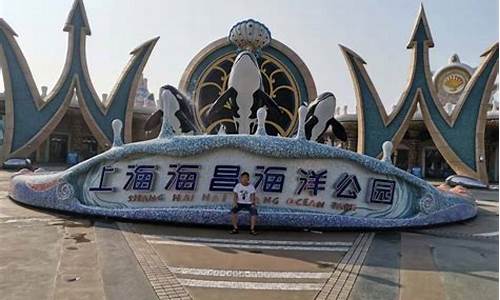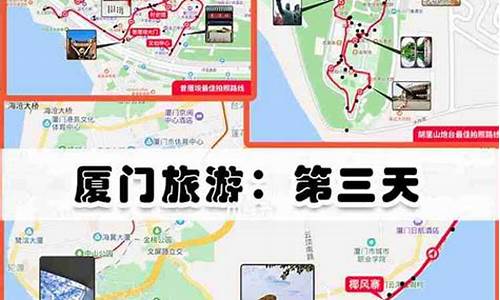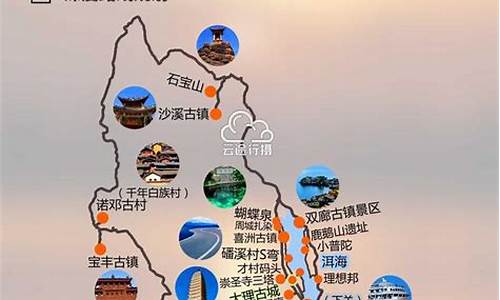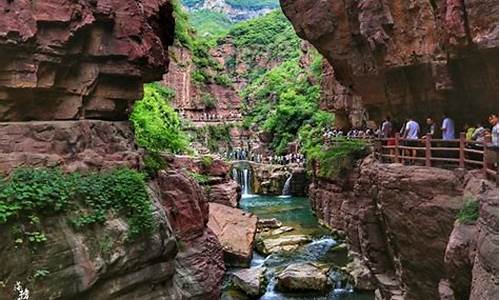兵马俑馆旅游攻略英文_兵马俑景点英文介绍
非常感谢大家聚集在这里共同探讨兵马俑馆旅游攻略英文的话题。这个问题集合涵盖了兵马俑馆旅游攻略英文的广泛内容,我将用我的知识和经验为大家提供全面而深入的回答。
1.英文介绍家乡陕西旅游景点 英语介绍陕西名胜古迹
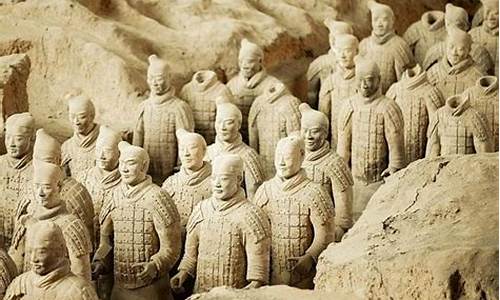
英文介绍家乡陕西旅游景点 英语介绍陕西名胜古迹
陕西旅游景点介绍 英文版 中文对照
西安, 陕西省的首都,在少数个中国城市肥沃韦古老墙壁能仍然被看见的。西安建于超过3,000年并且有印象深刻的收藏的考古学依靠帮助解释它攸久的历史。以前叫作Chang'an (“ternal和平”),市西安担当了资本在13朝代以下。
Xi'an是在地方艺术之内的叫作背心并且制作它兴旺的考古学再生产产业的社区,特点绘Neolothic瓦器; 与实物大小一样的Qin赤土陶器形象、给上釉的特性葬礼商品和特性坟茔壁画。 各种各样的民间工艺在这个区域也导致,包括针线,陶瓷,纸切开和摩擦(做由石雕刻印象)。
中国有231个皇帝和一位支配的女皇, 079年谁在陕西被埋葬了。 一个皇家陵墓在陕西,对大多的苹果访客,是Oianling坟茔吴Zetian,中国的唯一的tuling的女皇和她的hubband李Zhi,有特性皇帝Qin shihuang的作为“星水池”和马皇帝Gaozong被赞誉的赤土陶器战士在周朝2,800年前,有6,000年的历史的新石器时代的Banpo博物馆---一个重要被挖掘的被恢复的Neolothic中国村庄、在早明朝修筑的中国的佳被保存的市墙壁(1368-1644),著名callgraphers架设在652,石碑森林,最大的石图书馆在中国并且称的中国书法宝库与雄伟收藏的大狂放的鹅塔形成汉朝(206 BC-AD 220)对清朝(1644-1911)。
陕西省旅游景点英文介绍
Xi'an,the capital of Shannxi Province,is stuated in the fertile Wei RiverValley.One of the few Chinese cities where the ancient foetress walls can still be seen.Xi'an dates back more than 3,000 years and has impressive collection of archaeological relies to help explain its rich history.Formerly known as Chang'an("ternal Peace"),the city of Xi'an had served as a capital under 13 dynasties.
Xi'an is vest known as within the local arts and crafts community for its thriving archaeological reproduction industry,which features painted Neolothic pottery; life-size Qin terra-cotta figures, glazed Tang funeral wares,and Tang tomb murals. A wide variety of folk crafts is also produced in the region,including needlework,ceramics,paper cuts,and rubbing(made from the impressions of stone carvings).
China had 231 emperors and one ruling empress, 79 of whom were buried in Shaanxi. One imperial mausoleum in Shaanxi,which apples to most of visitors,is the Oianling Tomb where Wu Zetian, China's only tuling empress, and her hubband Li Zhi, who has Emperor Gaozong of the Tang Emperor Qin shihuang's Terra-Cotta Warriors and Horses acclaimed as the "Star Pool" in the Zhou Dynasty 2,800 years ago,the Neolithic Banpo Museum with a history of 6,000 years---an important excavated restored Neolothic Chinese village, the China's best-preserved City Wall built in the early Ming Dynasty(1368-1644), the Big Wild Goose Pagoda erected in 652, the Forest of Steles, the largest stone library in China and also called a treasure house of Chinese calligraphy with a superb collection by famous callgraphers form Han Dynasty (206 BC-AD 220) to Qing Dynasty(1644-1911).
The Terra-Catta WarriorsHorses of the Qin Dynasty--秦兵马俑
Huaqing Hot Spring-华清池
First Emperor's Tomb of the Qin Dynasty-秦始皇陵
City Wall-西安城墙
Banpo Museum-半坡博物馆
Big Wild Goose Pagoda-大雁塔
Forst of Stelae-碑林
Great Mosque -清真寺
Famen Temple-法门寺
Maoling Mausoleum-茂陵
Yang Guifei(719-756)Tomb-杨贵妃墓
Black Dargon Temple -青龙寺
Temple of Prosperous Teaching-兴教寺
Three Days on Mount Huashan-华山3日游
Qianling Tomb-乾陵
Yellow Emperor's Tomb-黄帝陵
Yaowang Temple药王庙
求一篇有关陕西榆林景点的英语作文,急!!!
Beitai Town, is located in Yulin City, 4 kilometers north of the city red hill. Beitai town is the Ming Dynasty the Great Wall ruins of the most ambitious, building one of the most majestic momentum, known as China's " three wonders of the Great Wall ( East Shanhaiguan, in Beitai Town, West Jiayuguan ) " and " the Great Wall first " called. In 1992 the Shaanxi province government announced for the provincial cultural relics protection units. In 2001 06 Sept. 25, Beitai town as the Ming Dynasty ancient architecture, was included in the State Council approved the fifth batch of national key cultural relics protection unit list.
汉语:镇北台,位于榆林市城北4公里之红山顶上。镇北台是明代长城遗址中最为宏大、气势最为磅礴的建筑物之一,素有中国长城“三大奇观之一(东有山海关、中有镇北台、西有嘉峪关)”和“万里长城第一台” 之称。1992年陕西省政府公布为省级文物保护单位。 2001年06月25日,镇北台作为明代古建筑,被国务院批准列入第五批全国重点文物保护单位名单。
西安英文景点介绍
西安英文景点介绍
西安,古称长安、镐京,现为陕西省省会、副省级市、国家区域中心城市(西北),是国务院批复确定的中国西部地区重要的'中心城市,下面就是我为大家带来的西安英文景点介绍,希望能够帮到大家!
西安英文景点介绍
大雁塔 Great Wild Goose Pagoda 小雁塔 Small Wild Goose Pagoda 秦始皇兵马俑博物馆
Museum of Emperor Qinshihuang’s Tomb Figures of Soldiers and Horses 秦始皇陵 The Tomb of Emperor Qinshihuang 鼓 楼 The Drum Tower 钟 楼 The Bell Tower
西安城墙 The Xi’an Circumvallation 华清池 The Huaqing Pond 法门寺 The Famen Temple
黄河壶口瀑布 The Huanghe Hukou Waterfall 大唐芙蓉园 Lotus palace of Tang Dynasty Xi'an: Big Wild Goose Pagoda (Dayanta)
The Big Wild Goose Pagoda (Dayan Ta),is a Buddhistpagoda built in 652 AD during the Tang Dynasty and originally had five stories.The original construction of rammed earth with a stone exterior facade eventually
collapsed five decades later but was rebuilt by Empress Wu Zetian in 704AD who added five more stories. A massive earthquake in 1556 heavily damaged the pagoda and reduced it by three stories to its current height of seven stories One of the pagoda's many functions was to hold sutras and figurines of the Buddha that were brought to China from Indiaby Xuanzang, a famous Chinese Buddhist monk, scholar, traveler, and translator.Xuanzang is a prominent Buddhist figure mostly known for his seventeen year overland trip to India and back, which is recorded in detail in his autobiography and a biography, and which provided the inspiration for the epic novel “Journey to the West”.
The pagoda is built on the premises of the Temple of Great Maternal Grace (Da Ci'en), originally built in 589 AD and then rebuilt 647 AD by the Tang Emperor Gaozong in memory of his mother EmpressWende. Before the gates of the temple stands a statue of Xuanzang. North Square of Big Wild Goose Pagoda
Surrounding Big Wild Goose Pagoda, the scenery is also quite charming, especially the square north of the Da Ci'en Temple. Covering about 110,000 square meters (131563 square yards) plus 20,000 square meters (23920.6 square yards) of water area, it holds many records: in Asia, it is the biggest Tang-culture square, the biggest fountain and waterscape square, and the largest-scale sculptures area. In the world, it has the most benches, the longest light-belt, and the largest-scale acoustic complex.
The entire square is composed of waterscape fountains, a cultural square, gardens and tourist paths. There you can taste real Chinese culture and traditions and fully enjoy the truly attractive views. With reliefs on the theme of the prosperous Tang Dynasty, 200-meter-long (656-foot-long) sculpture groups, 8 groups of sculpted figures, 40 relievos on the land, and 22 styles of musical fountains, it has become a must-see when you visit Big Wild Goose
The Museum of Qin Terra-cotta Warriors and Horses
One of the most significant archaeological finds in the world, this
16,300-square-meter excavation reveals more than 7,000 life-size terracotta figures of warriors and horses arranged in battle formations. (3 pits)
The terracotta warriors and horses, created about 2,200 years ago, were found in 1974 on the east side of the tomb of the First Emperor Qin Shihuang (259 BC - 210 BC) near Xi'an.
Emperor Qin Shihuang had Ying as his surname and Zheng as his given name. In 221 B.C., when he unified the whole country, named himself Shihuang Di and carried on the hereditary system.
To protect against harassment by the Hun aristocrats. Emperor Qin Shihuang ordered the Great Wall be built. The Bell Tower (Zhonglou)
Centrally located on the Xi'an. The original City Bell Tower was constructed in 1582 and situated in the west, but on its reconstruction in 1739, the tower was relocated to its present site. A Ming dynasty bell weighing approximately 14.76 tons hangs in the tower, but no longer chimes to inform residents of the time of day. Visitors have the chance to inspect up-close a number of smaller bells.
Although the site itself is more of a landmark than an attraction, it is frequently enlivened with local performances. Visitors interested in local music should visit the site in the morning and early afternoon.
Originally, the tower had a number of entrances, but today, it only has one accessible entrance located on Bei Dajie close to the Admission Ticket Office.
Xi'an: Drum Tower (Gulou)
The Drum Tower was built in 1380 during the early Ming Dynasty, and got its name from the hugedrum located within the building. In contrast to the Bell Tower ,where bell was stricken at dawn, drum was beat at sunset to indicate the end ofthe day.
There are twenty-four drums in the northand south sides of the Drum Tower . These drums standfor the Twenty-four Solar Terms, a form of weather
calendar created by theChinese in order to guide the agricultural production. The Xi’an Circumvallation
The Xi’an Circumvallation site is located at the center of xi’an city with the form of a rectangular. The circumvallation, with its wall height of 12 meters, bottom width of 18 meters and top width of 15 meters, consists of 4 city gates: changle gate to the east, anding gate to the west, yongling gate to the south and anyuan gate to the north. Its east wall has the length of 2590 meters, west wall of 2631.2 meters, south wall of 3441.6 meters and north wall of 3241 meters. It was constructed on the basis of the tang imperial city and under the strategic consideration of defense. The thickness of the wall is larger than its height and is very solid that cars can run on it. The existing circumvallation was built during
1373-1378 with the history of more than 600 years. It is one of the most
famous wall construction in China’s history after the middle ages as well as the most preserved ancient one in China. Small Wild Goose Pagoda
The Small Wild Goose Pagoda, sometimes Little Wild Goose Pagoda (Chinese: 小雁塔; pinyin: Xiǎoyàn Tǎ), is one of two significant pagodas in the city of Xi'an, China, the site of the old Han and Tang capital Chang'an. The other notable pagoda is the Giant Wild Goose Pagoda, originally built in 652 and restored in 704. The Small Wild Goose Pagoda was built between 707_709, during the Tang Dynasty under Emperor Zhongzong of Tang (r 705_710). The pagoda stood 45
Burial figures of warriors and horses
秦始皇兵马俑的英文译名探讨
关键词: 兵马俑,英文译名
笔者最近在查阅烧结砖瓦发展史中发现,国外烧结建筑材料历史文献中“Terra cotta”一词频频出现,随即想到秦兵马俑也是用这一词来表示。此后翻阅了有关介绍秦兵马俑的英文书籍和宣传资料,发现有表示方法有: Terra- cotta warriors; The terra - cotta warrior and horses; The Terra Cotta Soldier Figures;Terra - cotta Army; Terra - cotta warriors, horses and chariots; Terra - cotta legions; Terra - cotta Figures; Terra - Cotta Soldiers; Terra- cotta figures; soldier and horse figures。
笔者认为,“Terra - cotta”这一词主要是表示烧结建筑材料———赤陶砖,该类赤陶砖是在完全氧化气氛条件下烧成的,具有不同程度红颜色的或带有装饰性图案的建筑用烧结块材。如由美国学者W. E. 布罗奈尔(W. E. Brownell)在1976年所著的《建筑粘土制品》( Structural Clay Products)一书中对这类产品给出了详细的说明。该书中对“Terra - cotta”这类建筑用的红色烧结产品在美国的发展历史进行了描述:“美国建筑用赤陶砖( architectural terra cotta) ,在经几次失败后, 1849年,以柏思安博的霍尔赤陶砖厂的建成为标志,开始了建筑用赤陶砖的生产。1879年,该厂与其他厂合并为柏思安博赤陶砖公司。早期赤陶砖用红色粘土和炻器粘土制造建筑赤陶砖复杂的装饰外表。”
为什么世界上这独一无二的秦兵马俑要引用常用于建筑材料的这一普通名词来表示? 笔者曾数次参观过秦兵马俑,而秦兵马俑是在确信无疑的还原气氛条件下烧结成的真人大小的军阵,不能用西方人概念中的画像砖或砖雕、建筑用红焙烧色砌块来描述这一世界奇迹。显然,秦兵马俑的原创目的与建筑毫无关系。
随后,笔者又查阅了《简明牛津词典》[ The Concise Oxford Dictionary (New Edition Sixth edition 1976. ) ] ,该词典对这一词的解释如下:“Terra cotta”通常是指不上釉的呈红褐色的细陶器,用于装饰性的建筑材料,并以雕像形式用于建筑上,陶器等;小雕像等。1978年国防工业出版社出版的清华大学所编《英汉技术词典》中对这一词的解释是:Terra - cotta[意大利语] n. 1)琉璃砖[瓦]; 2)空心[饰面]砖,陶砖[瓦]; 3)赤土[混合]陶器; 4)赤褐色,赤土(色) ,赤陶。1985年上海译文出版社出版的《新英汉词典》中对这一词的解释是:Terra - cotta n. 1) [制陶器等或建筑用的、上釉或无釉的]赤土,赤陶: a terra - cotta vase 赤陶花瓶; 2)赤褐色; 3)一种带褐色的柑子。1984年商务印书馆出版的《英华大词典》,修订第二版中对这一词的解释是:Terra - cotta n. 1)制陶赤土,赤土陶器。2)赤褐色。3)空心砖,琉璃砖。4)一种褐色的柑子。1990年上海译文出版社出版的《德汉词典》中: TERRA KOTTA (同英语Terra - cotta)的解释为:原为意大利语,硬陶土;赤陶;用硬陶土制的小人像,小罐。
赤———红色也。从上述可知,“Terra - cotta”如指陶器时均为红色陶器。但秦兵马俑如从陶器的概念上讲,应为还原法烧制的灰陶。从已出土文物看,我国从商代晚期就有了用还原法烧制的青灰色屋面瓦,也发现了西周早期用还原法烧制的大型空心砖。秦兵马俑也许是借助了烧制大型空心砖的经验,将俑、马均制成了空心,容易烧结。自秦始皇在世烧制兵马俑时,还原烧制法在我国已流传了千年以上,因此秦兵马俑没有理由不用还原烧制方法。还原烧制法烧出的物品就应完全是灰陶。而灰陶却用了一个表示赤陶的英文名称,显然是不合适的。秦兵马俑为现世界上独一无二的历史景观,但其英译名用了一个非常普通的、建筑上用的红色材料或是建筑美学上用的红色装饰构件的名词( Terra - cotta) ,不能确切地表述秦兵马俑真实的、科学的内涵。而且也会给西方人一个错误的概念,在没有看到秦兵马俑时,也许认为秦兵马俑都是红色的。
通过以上事例的分析,笔者认为秦兵马俑不应再用“Terra- cotta”的英文名称,秦兵马俑的烧制时间距今已有2200多年,应有自己本身的专用英文名称。建议使用:Blue or Grey PotteryWarriors, Soldiers, Legions;或是用Underground Warriors, Soldiers, Legions.
今天关于“兵马俑馆旅游攻略英文”的讲解就到这里了。希望大家能够更深入地了解这个主题,并从我的回答中找到需要的信息。如果您有任何问题或需要进一步的信息,请随时告诉我。
声明:本站所有文章资源内容,如无特殊说明或标注,均为采集网络资源。如若本站内容侵犯了原著者的合法权益,可联系本站删除。






